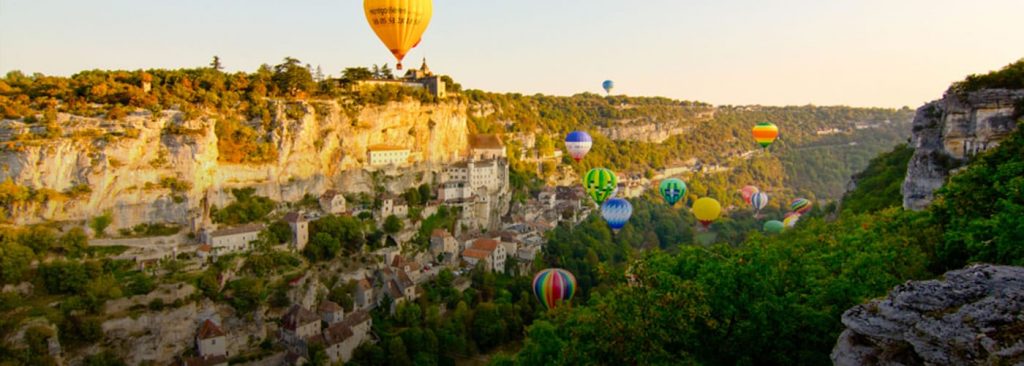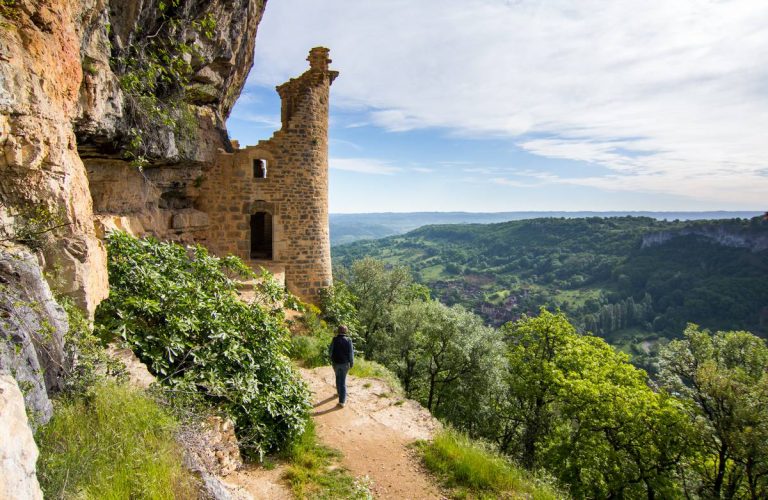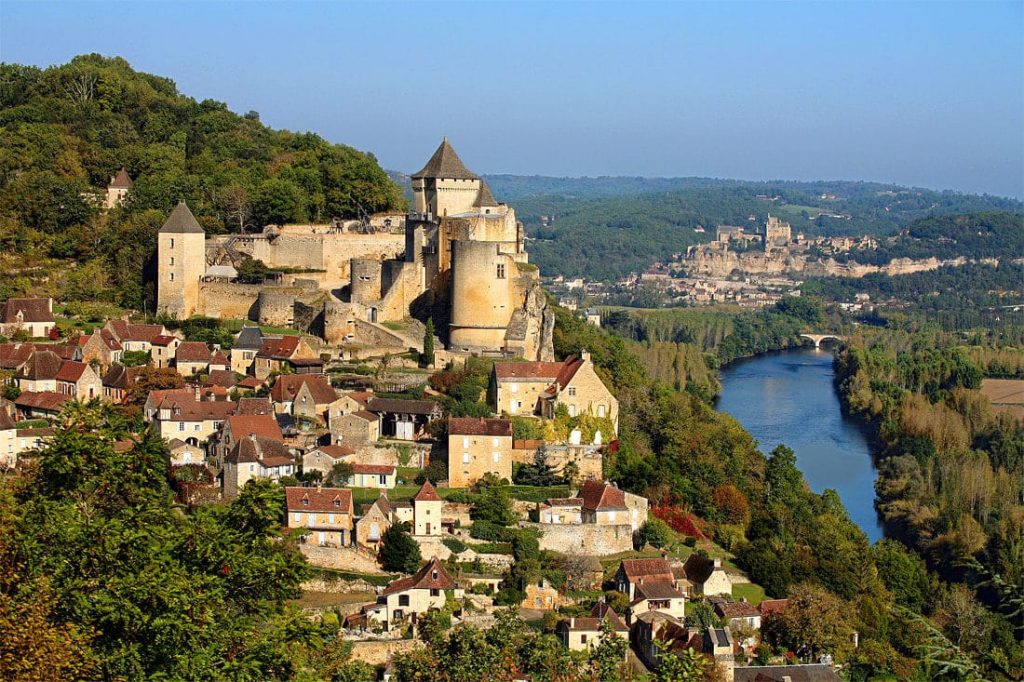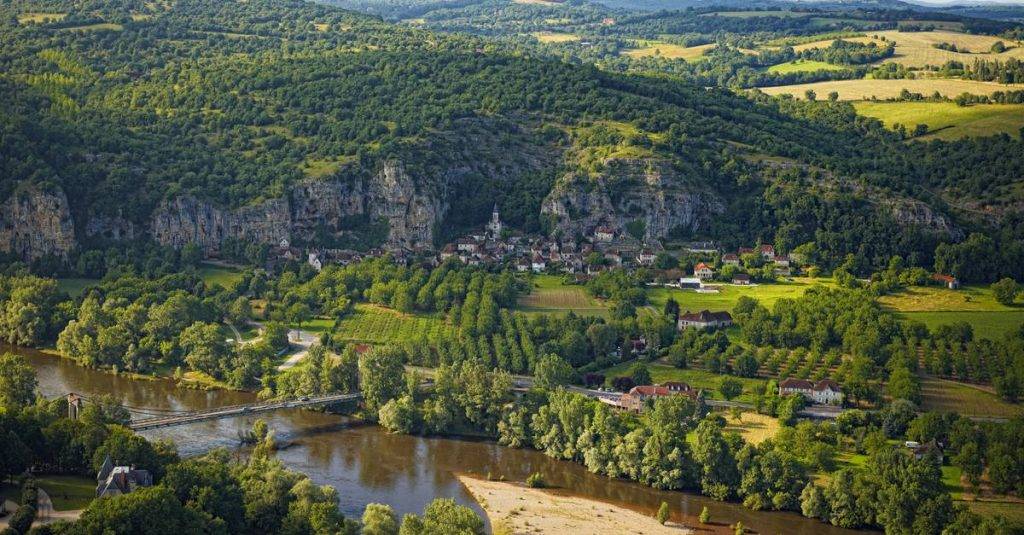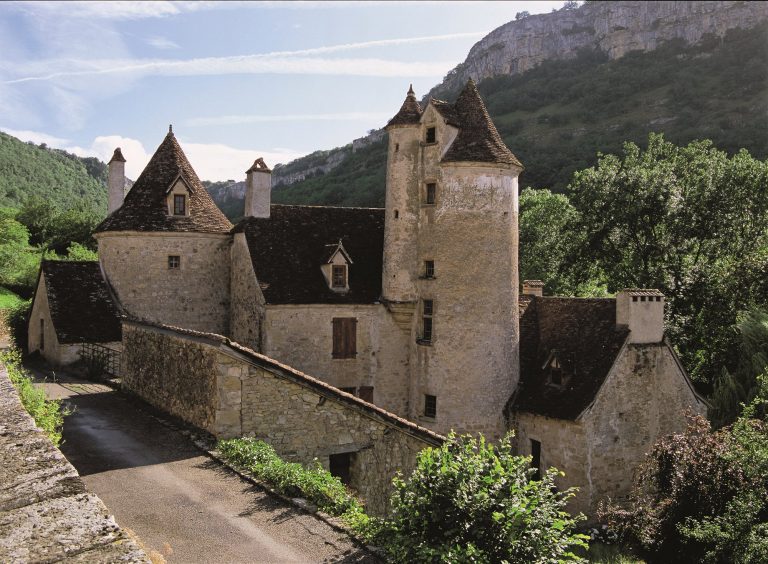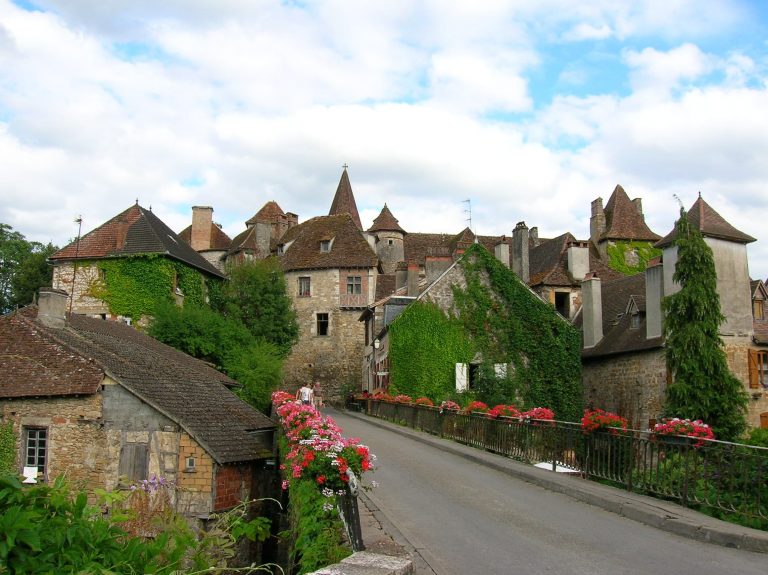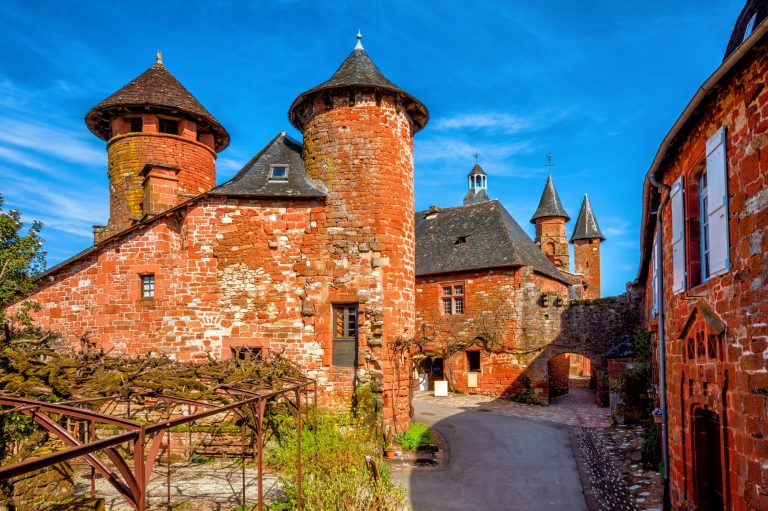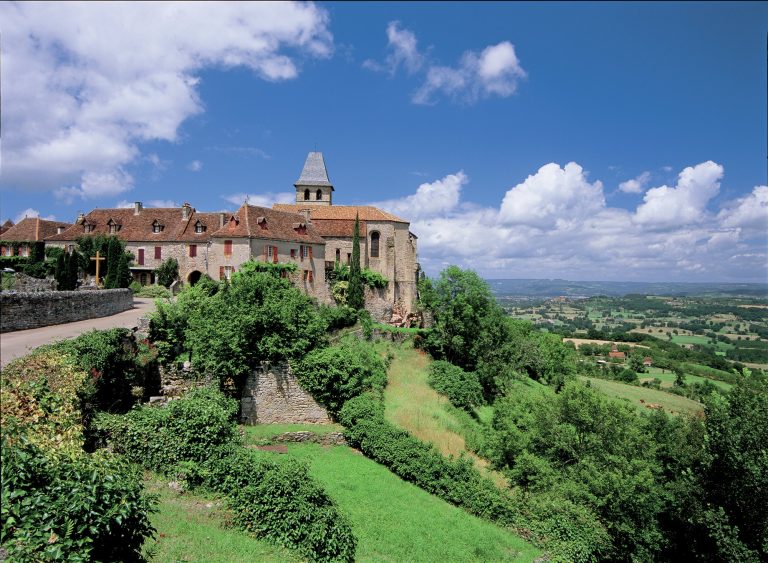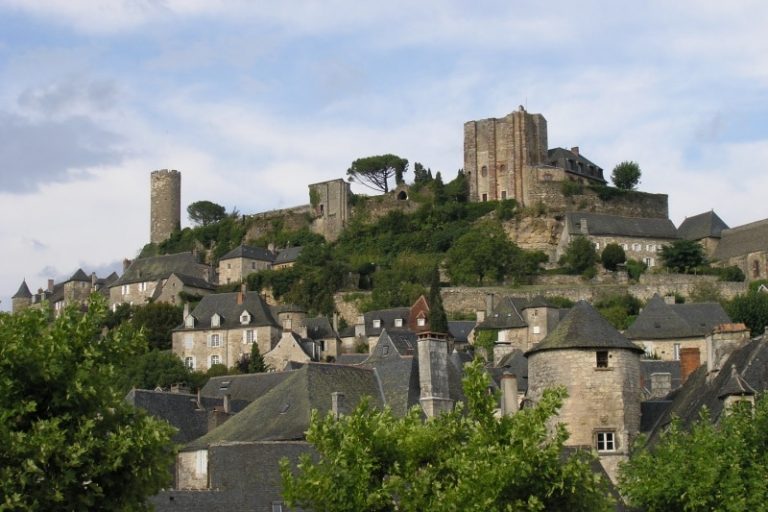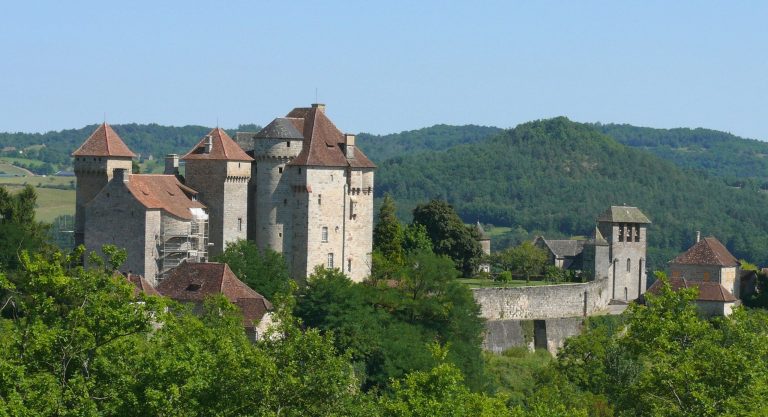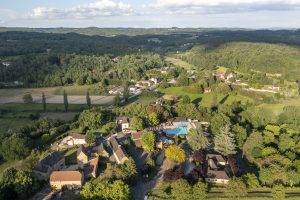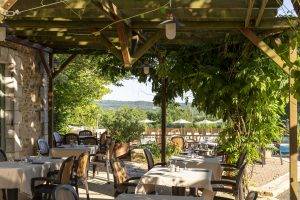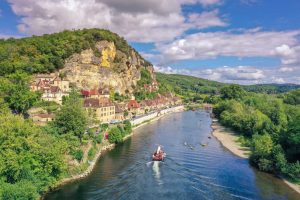Dordogne Valley
The Dordogne Valley is an area that is easy to fall in love with. Its rich historical heritage and the beauty and diversity of its natural areas are hard to resist.
Visitors flock to discover the typical villages that make up the area, as well as the castles, manors and gardens that shape its landscape.
Holidaymakers also go there to go hiking, to sail up the Dordogne in a gabarre (traditional boat), to cycle through wide open spaces… in short, for various outdoor activities.
Where is the Dordogne Valley?
Known in particular for its prehistoric caves and grandiose medieval castles, the Dordogne Valley is composed of several towns and villages located in three regions (Nouvelle-Aquitaine, Occitanie and Auvergne-Rhône-Alpes) and six departments (Puy-de-Dôme, Cantal, Corrèze, Lot, Dordogne and Gironde).
The area also owes its appeal to its many medieval towns which are among the “most beautiful villages in France”.
Three of them are located in the Lot, in Occitania (Autoire, Carennac and Loubressac) and three others in Corrèze, in New Aquitaine (Collonges-la-Rouge, Turenne and Curemonte).
In addition, there are ten other listed villages in the Dordogne, including Castelnaud-la-Chapelle, Beynac, La Roque-Gageac, Domme and Monpazier.
Among the destinations not to be missed in the valley of castles and gardens, are Argentat (Corrèze), Brive-la-Gaillarde (Corrèze), Bergerac (Dordogne), Saint-Emilion (Gironde) and Libourne (Gironde).
Historical heritage in the Dordogne Valley
The Dordogne valley is one of the territories that still bears the traces of the first human communities that settled in Europe several thousand years ago. These distant ancestors lived in caves whose walls are decorated with paintings and engravings representing mainly animals, those they hunted in particular. These cave paintings provide information about the environment and lifestyle of these prehistoric communities.
The prehistoric cave of Merveilles and the caves of Cougnac are among the decorated caves in the Dordogne valley.
The area also has many caves with concretions, including the Lacave caves and the Lascaux caves. The Padirac chasm is also one of the region’s must-see sites.
The Dordogne valley is also the land of castles, manors and gardens. These places tell some of the most important stories of the region’s history. For example, the castles of Castelnaud and Beynac were sworn enemies for a long time during the Hundred Years War.
Visitors are also interested in the Château des Milandes, a sumptuous residence where Josephine Baker found refuge at the beginning of the German occupation; it was also there that the woman known as the “Black Venus” agreed to gather information from high-level foreign military and political officials on behalf of the French Military Intelligence.
The architectural heritage of the Dordogne valley also includes iconic buildings such as the castle of Montal, the Towers of Merle, the castles of Fénelon, Hautefort or Vassinhac. The castles of Pannonia, the Saint-Laurent Towers and Rocamadour also attract many visitors.
The Dordogne Valley is also known for its many parks and gardens. Among the must-see attractions are the gardens of Eyrignac, the Gardens of the Imagination, the Water Gardens, the hanging gardens of Marqueyssac and the gardens of the Château de la Treyne… to name but a few.
The most beautiful villages of the Dordogne valley
The Dordogne Valley is indeed known for its typical villages. Here are six of the most beautiful villages in France located in the Dordogne valley, which are also among the most famous in the region:
- Autoire: Located in the Lot, Autoire offers a peaceful setting with beautiful manor houses flanked by turrets, manors, castles … Such that the village has earned the nickname “Little Versailles”. Besides these prestigious houses, Autoire also has many half-timbered houses. The village also includes a Roman church, a fountain, square dovecotes, small shops showcasing local art and gastronomy…
- Carennac: Also in the Lot, on the banks of the Dordogne, Carennac has Renaissance houses with carved windows surrounding the 11th century Château des Doyens and Cluniac priory. Visitors are also interested in St Peter’s Church, known for its carved tympanum, cloister and chapter house housing a magnificent 15th century tomb.
- Loubressac: This hilltop village in the Lot offers a breathtaking view of the valleys of the Dordogne, the Bave and the Cère. It is also one of the best places to admire the castles of Castelnaud, Montal and Saint-Laurent-les-Tours.
- Collonges-la-Rouge: Castles and noble houses with red sandstone facades, pepperpot towers, a church with a limestone tympanum, the Penitents’ chapel with modern stained-glass windows… These are some of the buildings that make up the richness of the architectural heritage of Collonges-la-Rouge, located in the Correze part of the Dordogne valley.
- Curemonte: Also located in Corrèze, Curemonte includes three private castles and as many fountains and churches. Visitors can also enjoy the architecture of beautiful noble houses and discover a hall housing a 16th century cross shaft.
- Turenne: Built on the side of a limestone hill, this medieval village in Correze still has many traces of its history, including the Caesar Tower which dominates the surrounding green landscape.
The Dordogne River
The Dordogne River is one of the most iconic rivers in France, some even call it the “most beautiful river” in the country. At first a series of rapids, its gorges wind through the volcanic landscapes of the Dore and Cantal mountains and the forests of Limousin. It then becomes a river and winds its way through limestone landscapes in the Quercy limestone plateaus and the cliffs of the Périgord. Finally, the river opens onto the coastal plain of Bordeaux.
The Dordogne gorges, dotted with large hydroelectric dams, are a true national industrial heritage. They are surrounded by thick forests and dominated by the castle of Val.
The Dordogne valley is on the Santiago de Compostela trail where pilgrims and tourists can admire the Sanctuary of Notre-Dame de Rocamadour, classified as a Grand Site de France in 2011.
In the Périgord Dordogne, the scenery is marked by limestone cliffs studded with troglodyte dwellings. The area has many viewing points offering breathtaking views of the Dordogne River as it meanders along. There are also plenty of activities on the waer in the Dordogne Valley. You can try your hand at canoeing, for example.
What to do in the Dordogne Valley?
Castles, fortified villages, gardens, villages, prehistoric sites… many places are well worth a visit in the Dordogne valley:
- The castle of Beynac: This stone sentinel is one of the many strongholds that have marked the history of the Périgord, particularly during the Hundred Years War. Nine hundred years old, the castle of Beynac was for a long time the sworn enemy of that of Castelnaud during this long period of conflict.
- The fortified village of Monpazier: Located between Sarlat and Bergerac, Monpazier is one of the nine “most beautiful villages of France” in the Périgord Noir. Classified as a “Grand Site de France”, the medieval vilage has many gems, including fortifications dating from the 13th century.
- The historic centre of Sarlat: Capital of the Périgord Noir and classified as a town of art and history, Sarlat is home to several dozen listed or classified historic monuments (Gisson manor house, Saint-Sacerdos cathedral, etc.), especially in its historic centre.
- The Padirac chasm: The site is considered one of the most important geological curiosities in France. The chasm is known for its underground river. After a vertiginous descent over more than a hundred metres, adventurers – whether professional or amateur – have the chance to admire the Great Pendeloque, a giant 60-metre high stalactite…
- The Lascaux IV caves: Lascaux IV allows you to admire a life-size reproduction of the paintings and engravings (made 17,000 to 19,000 years ago) that adorn the walls of the Lascaux caves.
